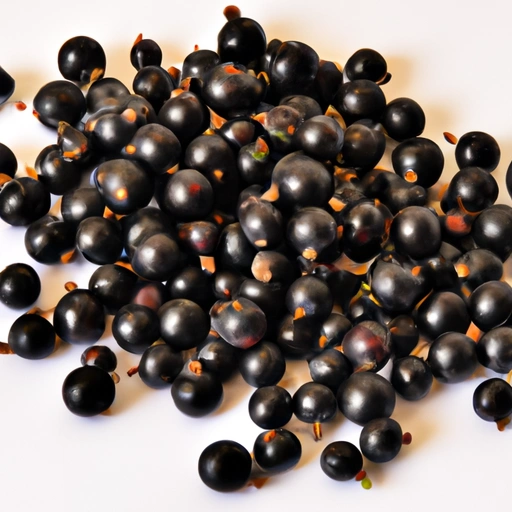Black Currant
Description

Black currant is a small, tart berry known for its deep purple hue and intense flavor. Rich in nutrients and antioxidants, it's a popular ingredient in diverse culinary traditions. This versatile fruit can be used in both sweet and savory dishes, making it an excellent addition to any kitchen pantry.
Common uses
Commonly used in jams, jellies, and syrups, black currant also shines in desserts, beverages, and sauces. Its tartness lends a distinctive flavor to any dish, making it a favorite among chefs and home cooks alike.
Nutritional value
Calories
Black currants are low in calories, with about 63 calories per 100 grams (3.5 oz/0.22 lb).
Protein
They offer 1.4 grams of protein per 100 grams (3.5 oz/0.22 lb).
Fat
This berry is low in fat, containing just 0.4 grams per 100 grams (3.5 oz/0.22 lb).
Carbohydrates
Black currants are a source of carbohydrates, providing approximately 15 grams per 100 grams (3.5 oz/0.22 lb).
Vitamins
They are rich in vitamin C, with about 181 mg per 100 grams (3.5 oz/0.22 lb), and also contain good amounts of vitamin A and several B vitamins.
Minerals
Black currants are a good source of potassium and iron, and also contain calcium, phosphorous, and magnesium.
Health benefits
The high vitamin C content in black currants supports immune health, while their potassium content helps maintain blood pressure levels. The antioxidants in black currants, such as anthocyanins, may protect against chronic diseases.
Potential risks
Black currants can interact with certain medications, such as blood thinners. They are also high in vitamin K, which can affect blood clotting. As with any food, there is a risk of allergy, and individuals with sensitive stomachs may need to moderate their intake.
Common recipes
Black currant is famously used in crème de cassis, a French liqueur, and in the British cordial known as Ribena. It's also a common ingredient in fruit tarts, pastries, and traditional European desserts.
Cooking methods
Fresh or dried black currants can be used in baking, while black currant preserves are often used as spreads or glazes. The berries can also be juiced or incorporated into smoothies.
Pairing with other ingredients
Black currants pair well with other berries, citrus fruits, apples, pears, and stone fruits. Their tartness complements rich meats like duck and lamb, and they can be used to accentuate the flavor of salads and cheese platters.
Summary
Black currant is a versatile and flavorful ingredient enjoyed across the globe. With its rich nutritional profile and potential health benefits, this small berry makes a big impact in a variety of dishes. Whether used fresh, dried, or as a preserve, black currant adds zest and depth to culinary creations.